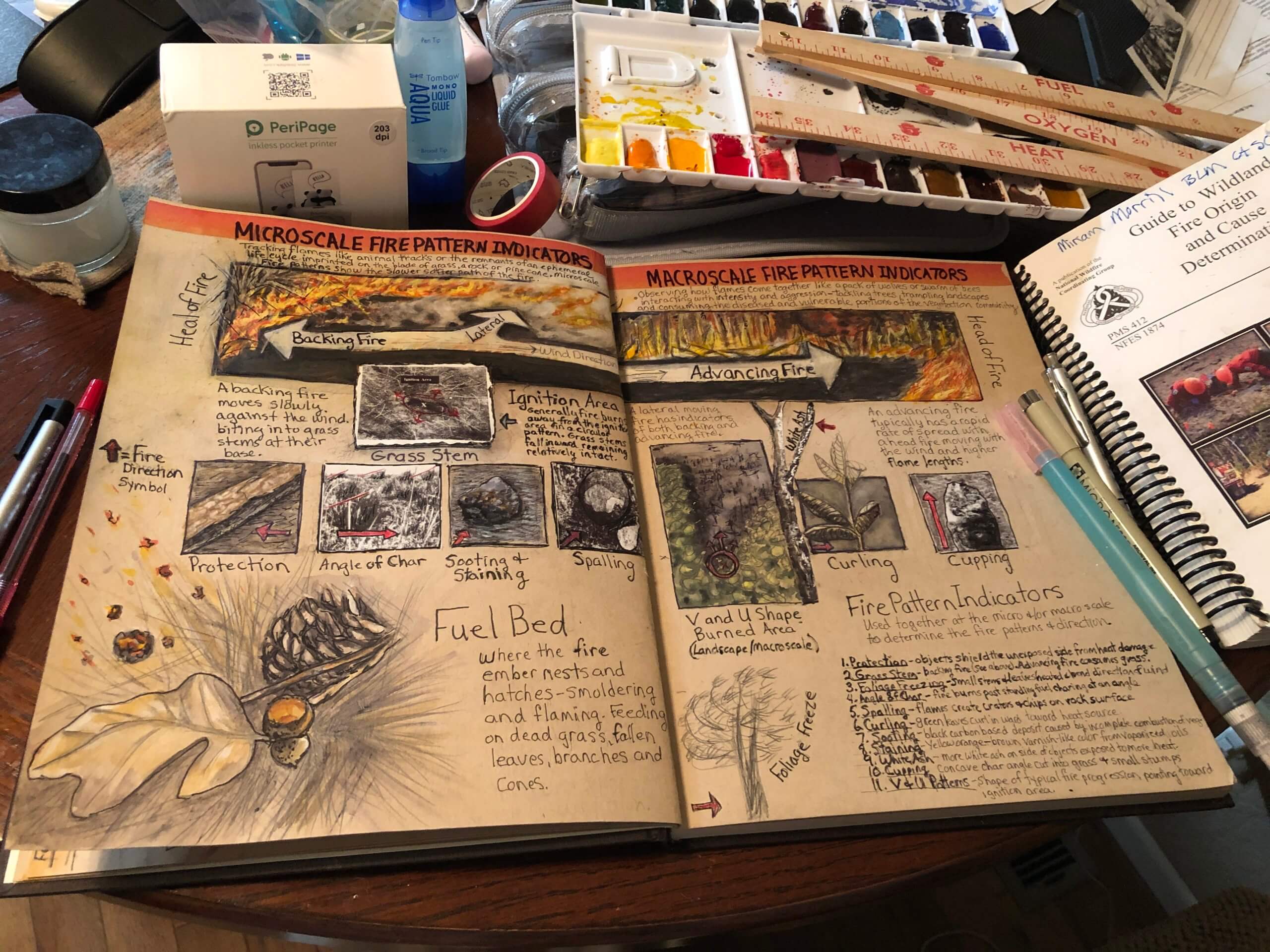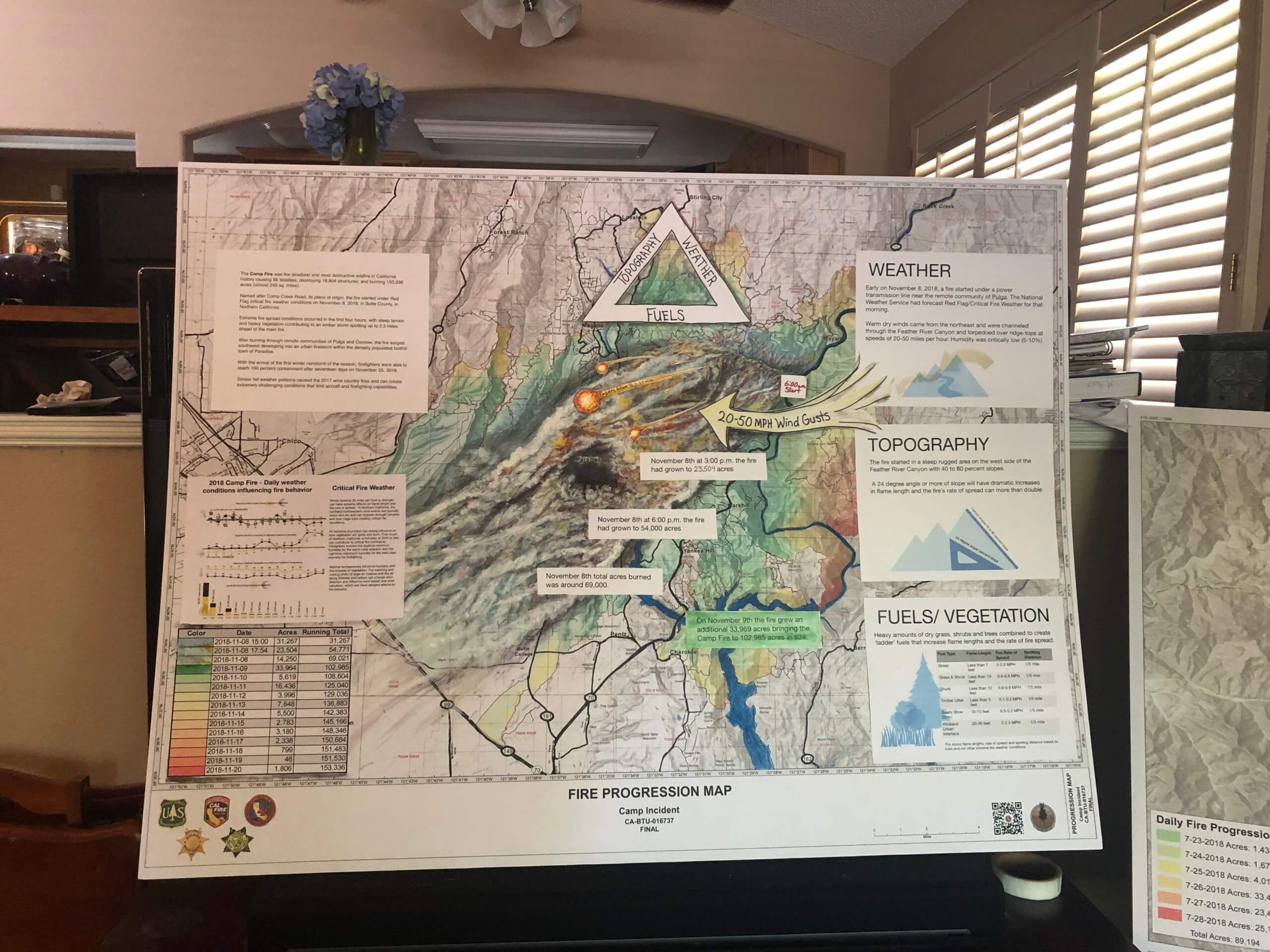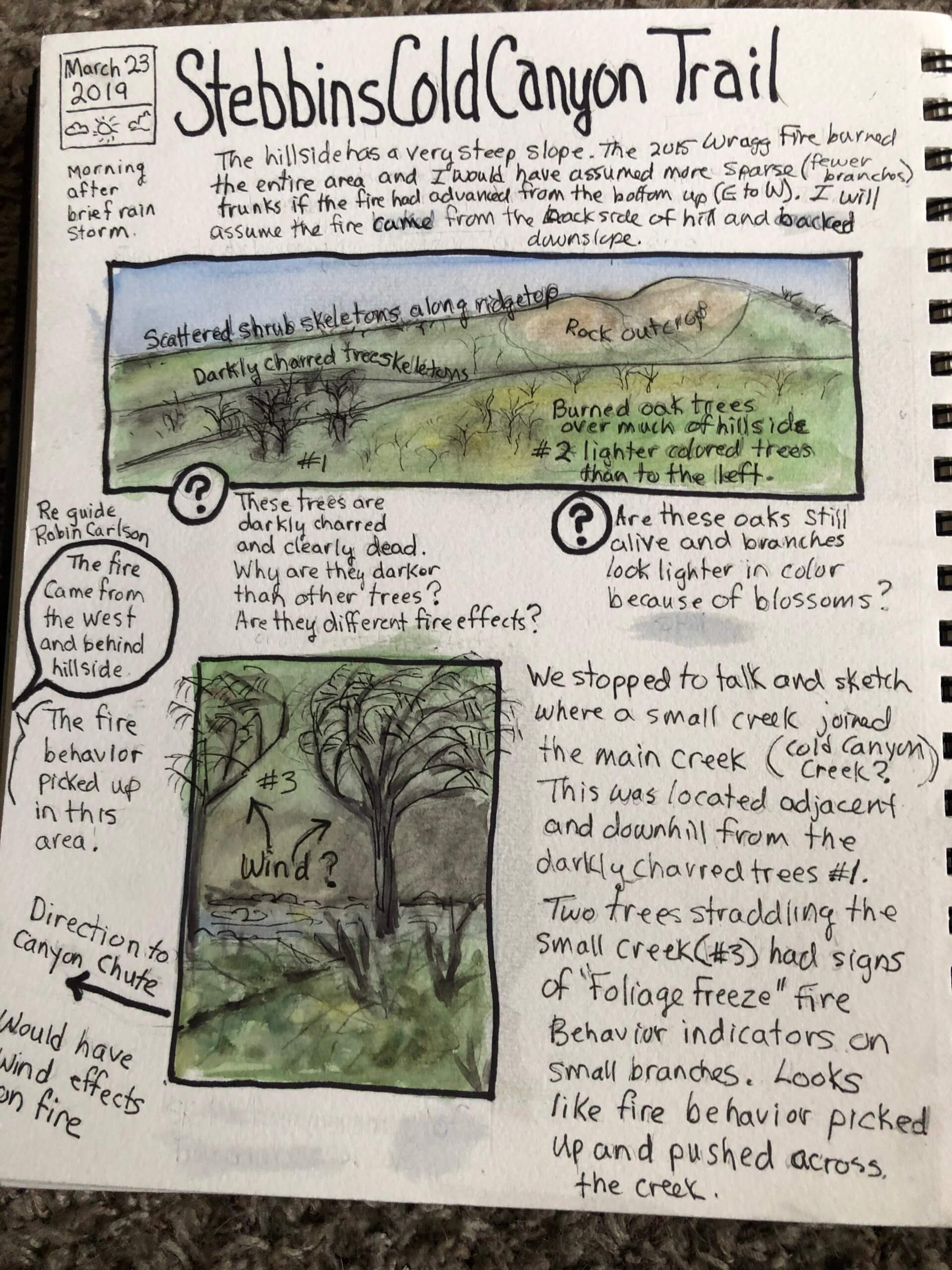Pyrosketchology: Drawing on experiences
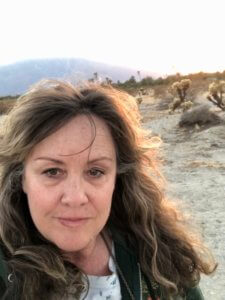
Artist Miriam Morrill defines pyrosketchology as the study of fire through the lens of art, illustration, and journaling practices.
According to Morrill’s website, nature journaling is a practice that can enhance observation skills, analysis, and engagement with elements of nature and the fire environment.
“Nature journaling,” Morrill says, “is an ongoing personal record of thoughts, experiences, observations and information. Through these practices, we can enhance memory retention, situational awareness and information relevance of the fire environment.
“Nature journaling practices include different information languages such as words, numbers, and pictures, which help engage different parts of the brain.”
At the end of 2020, Morrill left a lengthy federal-government career to explore place-based learning approaches that can create a more ecological sense of place, which includes fire; map senses to current conditions for better situational awareness; and integrate trauma-resilient practices that help in response and recovery from environmental hazards and risks.
Morrill grew up in northern California, with most of her time spent in Butte County. At one time or another, Morill lived within the footprint of the 2018 Camp Fire, including the communities of Pulga, Concow, Oroville, Paradise and Chico.
Morrill studied environmental biology and zoology at Humboldt State University but gained the bulk of her knowledge from 27 years of experience and training in natural resource programs with the US Forest Service, Bureau of Land Management (BLM) and US Fish & Wildlife Service.
Morrill has enjoyed working in a wide range of positions including wildlife biologist, fire mitigation and education specialist, wildland urban interface co-ordinator, co-operative fire protection specialist, public-affairs specialist, and climate change adaptation planner.
Clearly, there has been one common theme in Morrill’s career. and that has been fire. Whether fire fighting, habitat surveys for prescribed fire projects, endangered species consultations for fire planning, public information officer on an incident management team, or overseeing fire prevention and mitigation programs, fire has always been a focus of Morrill’s work.
A common theme in Morrill’s life has been art and visual communications. From hobby sketching and painting wildlife to enhancing communication efforts for her fire communication projects, Morrill has always needed a creative outlet and approach to communicating; this approach was especially helpful on international assignments during which she wanted a low-tech and relatable approach to communicate.
Only recently did Morrill start to use nature journaling to understand and communicate about fire. In 2017, Morrill and her husband decided to prepare to retire in the next couple of years and live full time in an RV. Morrill wanted to find a more mobile creative practice, and nature journaling was the ticket. As Morrill explored the nature journaling practice, she realized that creating art was a very small part of this engaging and deep way of learning. After the 2018 Camp Fire, Morrill realized that this tool could be valuable in teaching people how to become more aware and responsive to their fire environments; this may sound like a stretch, but Morrill believes that using place-based exercises that help enhance observations and awareness skills, and that map senses to environmental conditions, can create a powerful connection to place and awareness of changing conditions.
In 2019, while working for the BLM in California, Morrill partnered with The Nature Conservancy, Western Klamath Watershed group and the Karuk tribe to pilot a nature journaling prescribed fire workshop, while shadowing a Prescribed Fire Training Exchange (TREX) event. The fire team, local community and nature journaling participants were all very inspired to see how this practice could create an enhanced learning environment. The experience confirmed Morrill’s personal feelings about nature journaling and motivated her to continue practicing and exploring this approach into retirement.
Since the start of this year, Morrill has done several virtual workshops applying nature journaling approaches to Ready-Set-Go and evacuation planning, for a number of fire-adapted communities and networks. Morrill is currently working with the Butte County Fire Safe Council in northern California to develop a youth nature journaling fire guide and program.
Morrill has other projects scheduled over the year and is excited to work with the IAWF to provide a workshop that explores nature journaling as a tool to enhance firefighter situational awareness, during the International Wildland Fire Safety Summit and Human Dimensions of Wildland Fire Conference. This workshop will introduce participants to nature journaling and provide examples and exercises applied to the Look Up, Down and Around situational awareness fire weather and field observations.
For more information about Morrill’s nature journaling fire approaches and activities on visit Pyrosketchology.com. You can also find Morrill on Facebook, Twitter and Instagram under the handle @Phyrosketchology.
BEFORE FIRE
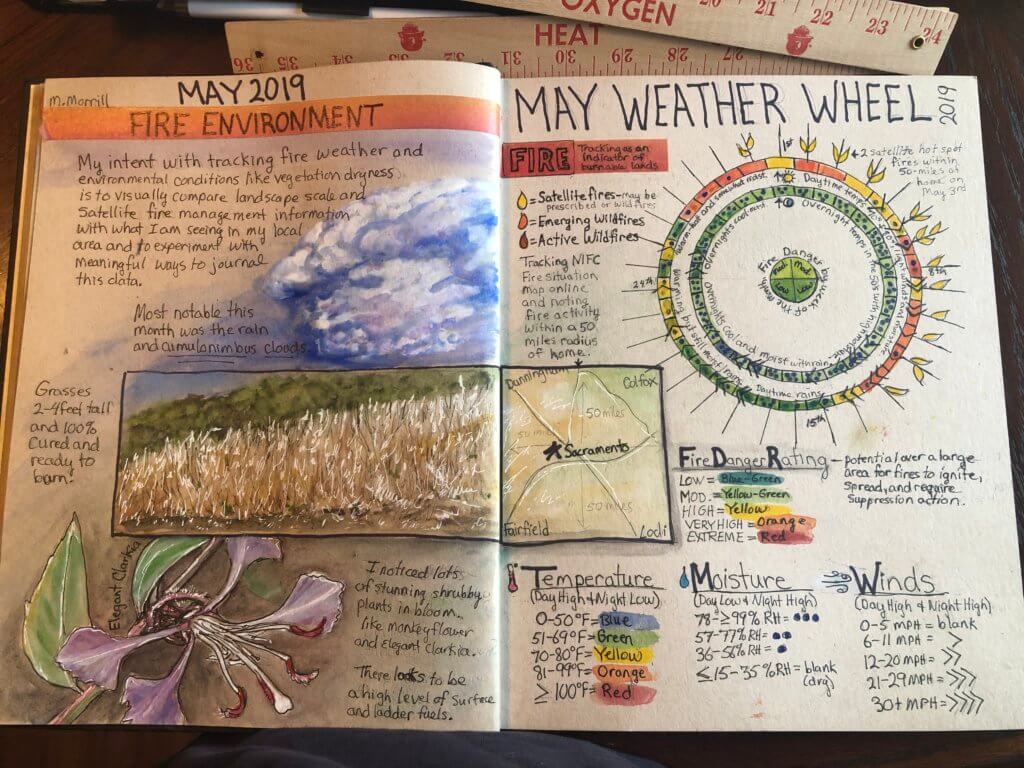
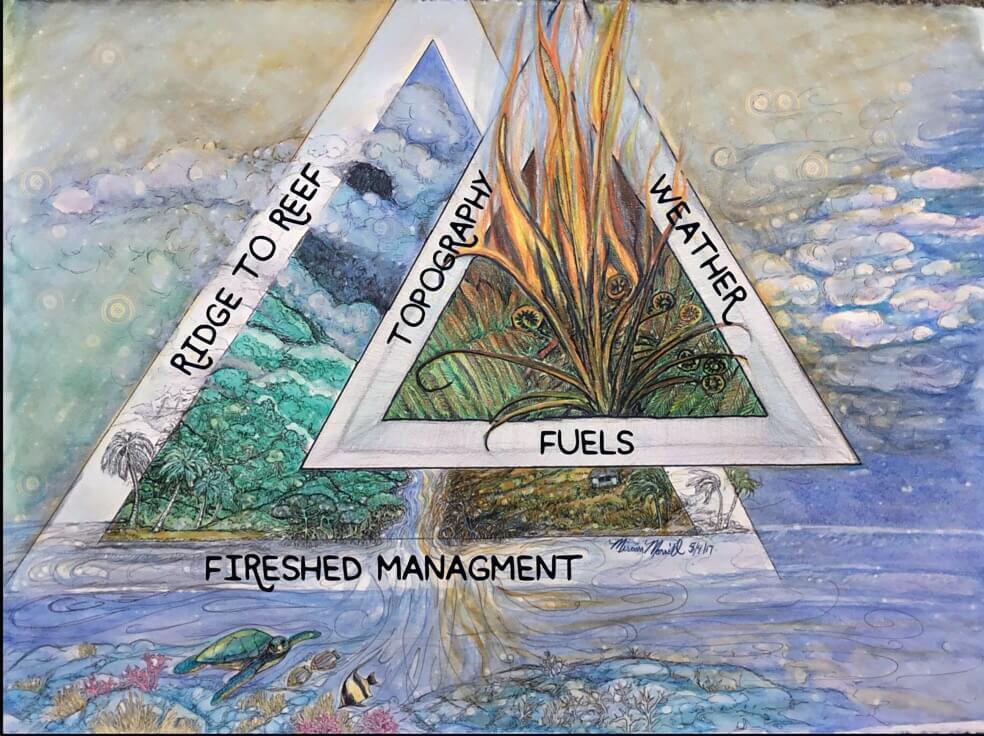
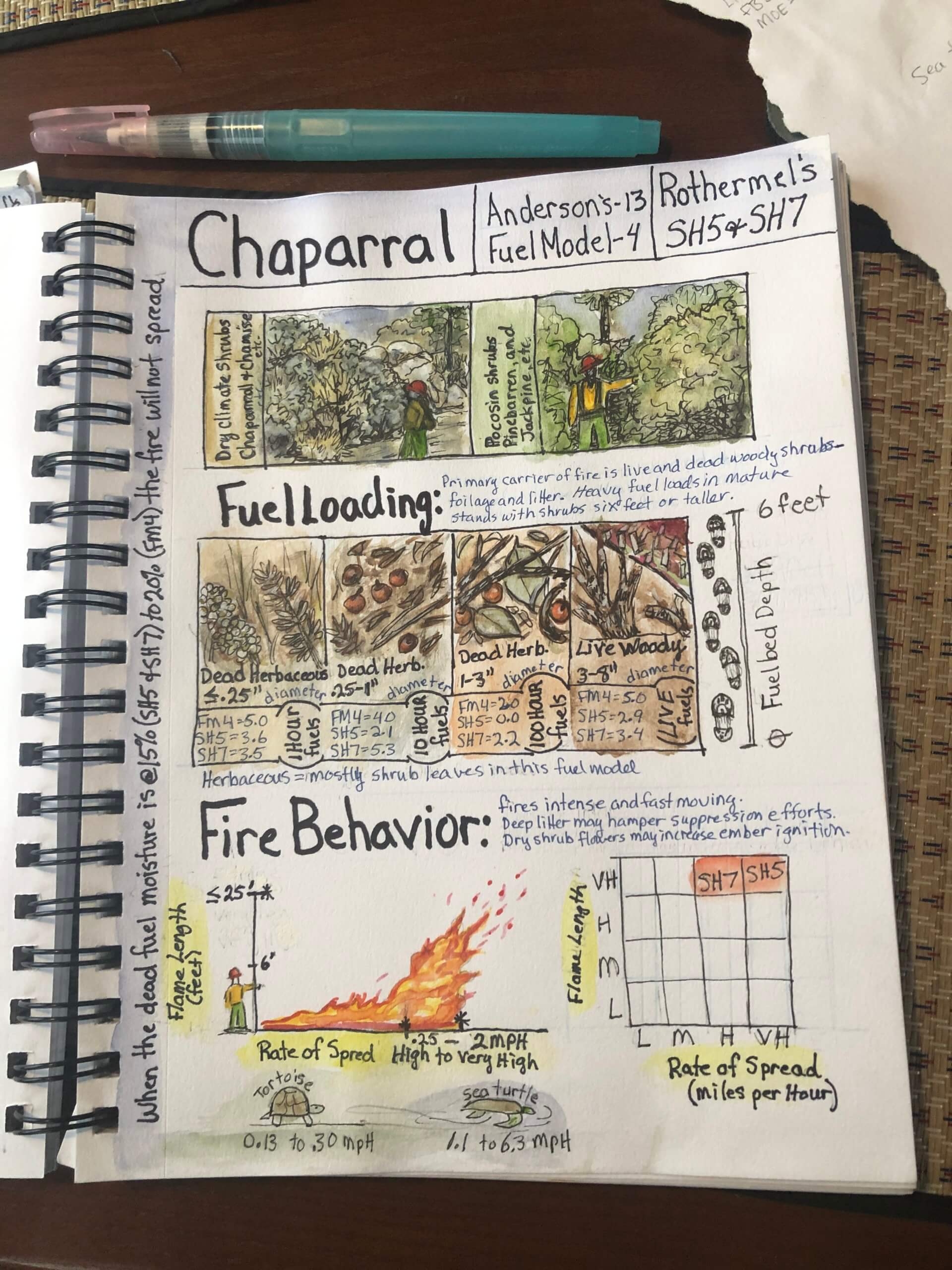
JOURNALING DURING FIRE
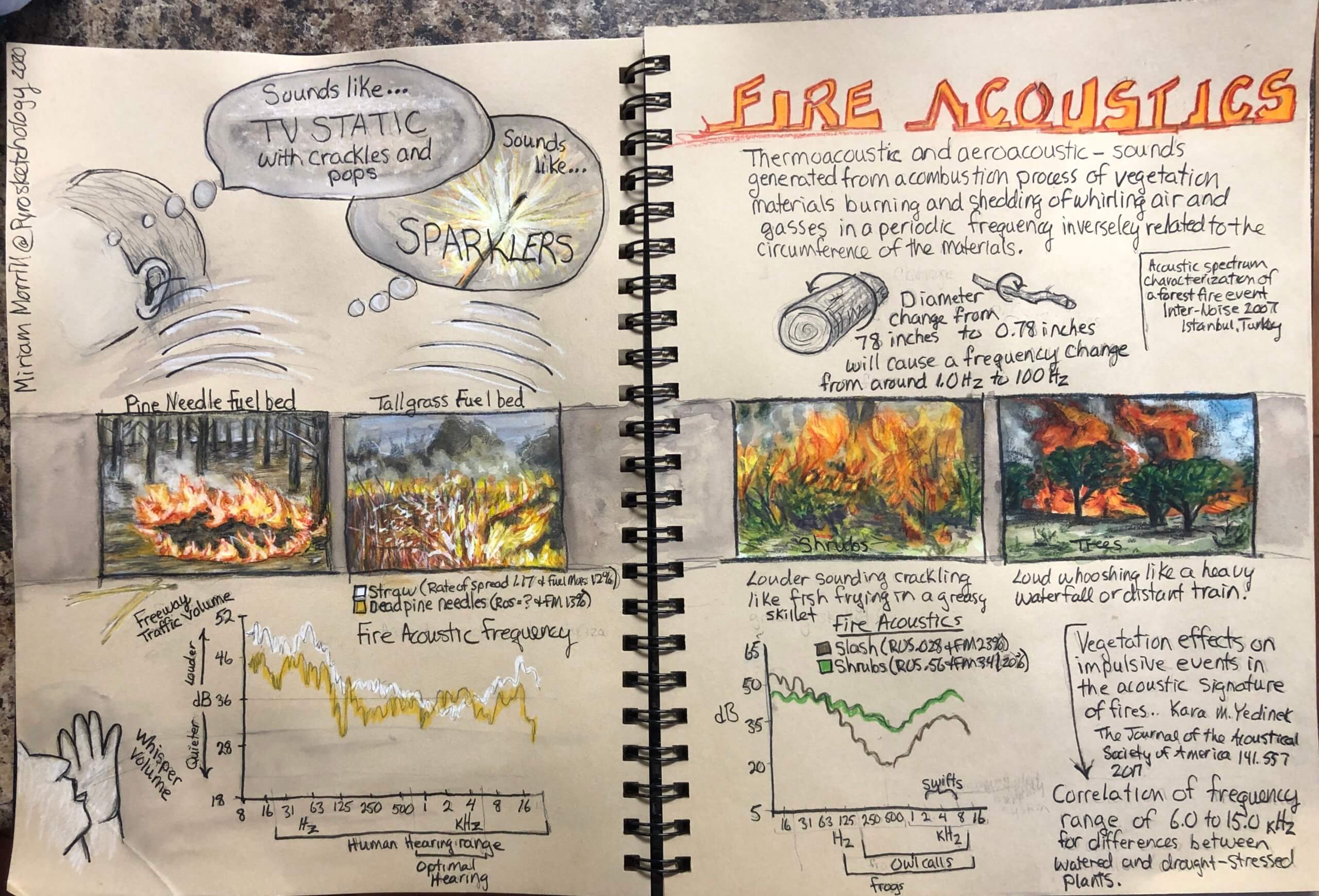
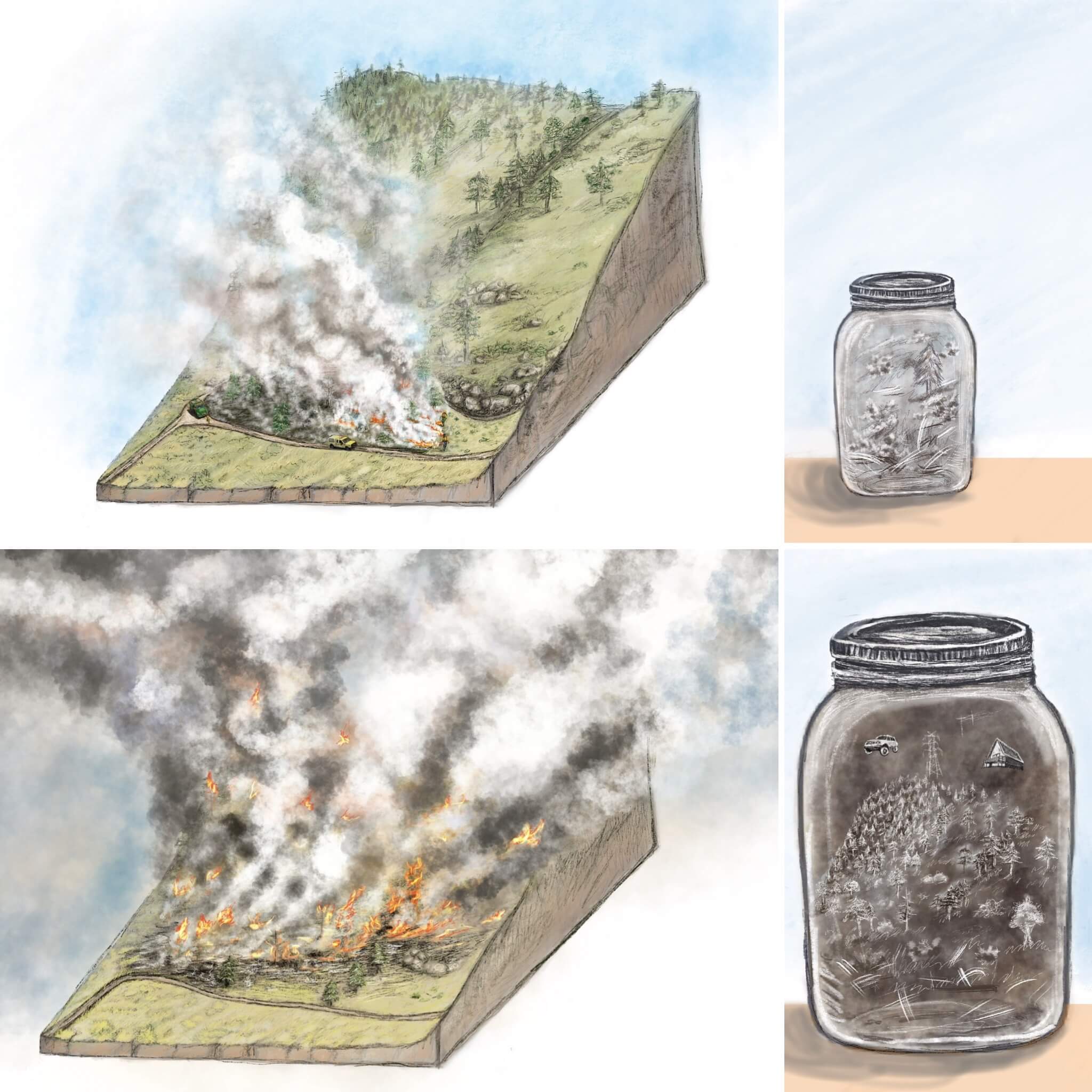
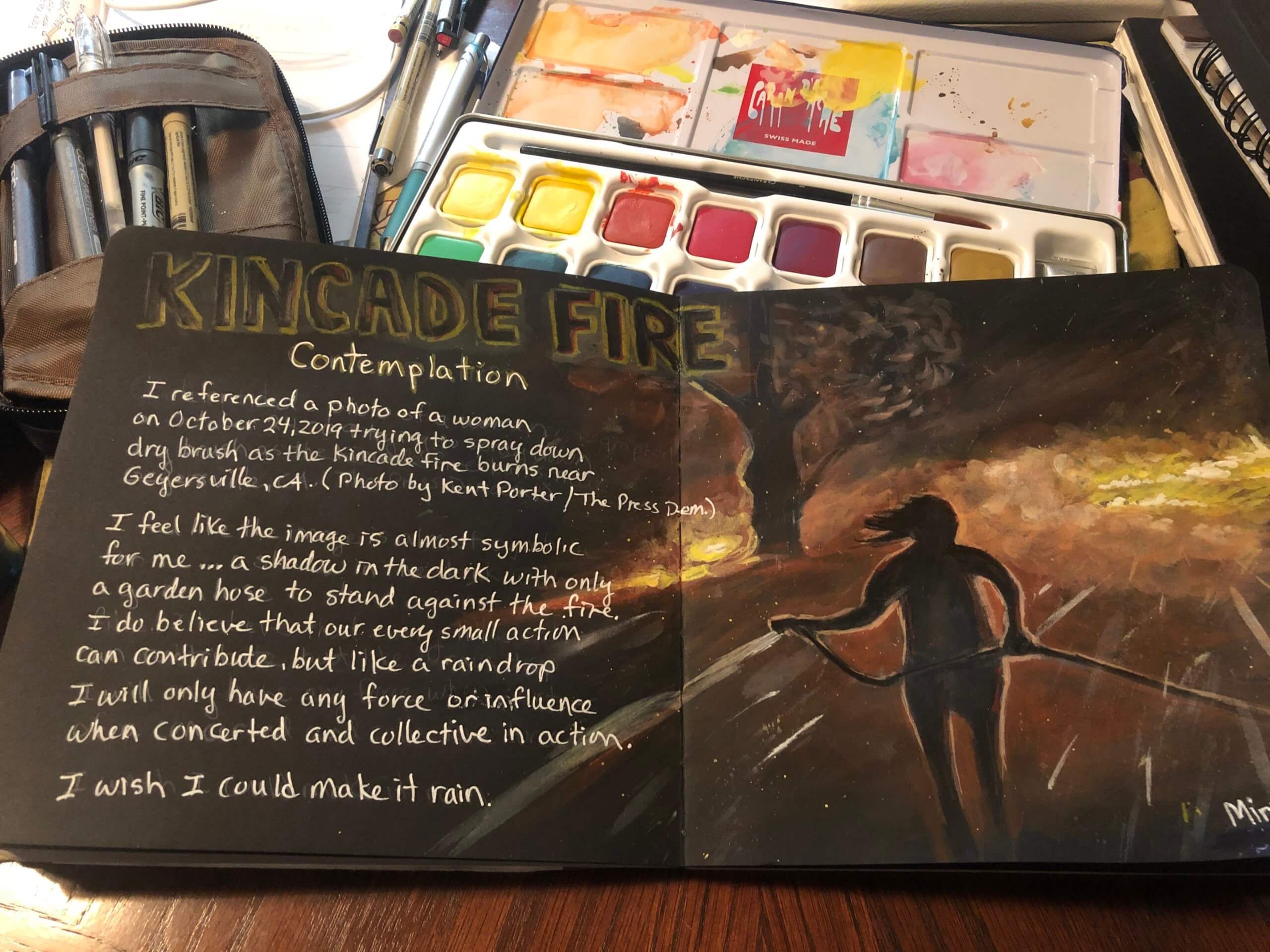
JOURNALING AFTER FIRE
